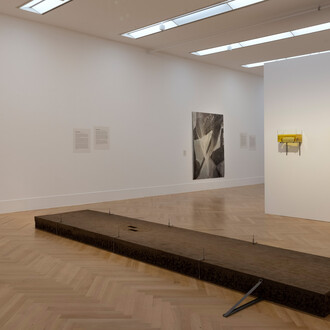From 1910 to 1914, Max Ernst, who was born in Brühl near Cologne, had studied at Bonn University. He was friends with August Macke and took part in the Exhibition of Rhenish Expressionists in Bonn in 1913. Although experiences in Macke’s circle might have been stimulating, Ernst was to find his own way in the following years when he played a decisive role in the development of Surrealism.
The emphasis of the collection of works by Max Ernst at the Kunstmuseum Bonn was created in 1987 with the purchase of the Collection of Hans Bolliger, whose comprehensive selection of 101 illustrated books and 60 prints allow us to recapitulate the entire development of Ernst’s art. An ensemble of five sculptures, which the Federal Republic of Germany presented to the Museum as a permanent loan, establishes a further important accent. Already in 1952 the Museum purchased the small painting Fishbone Forest of 1926.
Ernst’s pictures are creations of a seemingly boundless, yet highly precise fantasy. In order to stimulate this fantasy, Ernst was always searching for new artistic techniques. It was precisely when doing the prints and illustrated books that Ernst used a multitude of various methods for creating pictures, the frottage in the Histoire naturelle (1925) in which he invented another, yet unwritten history of nature, the collage in La femme 100 tetes (1929) and Une semaine de bonté ou Les 7 éléments capitaux (1934), for which he cut out models he took from books and magazines of the late 19th century, and combined them anew. Yet in the late work Kosmos der Maximiliana of 1964 there are still diverse experiments of color and form to be found.
















